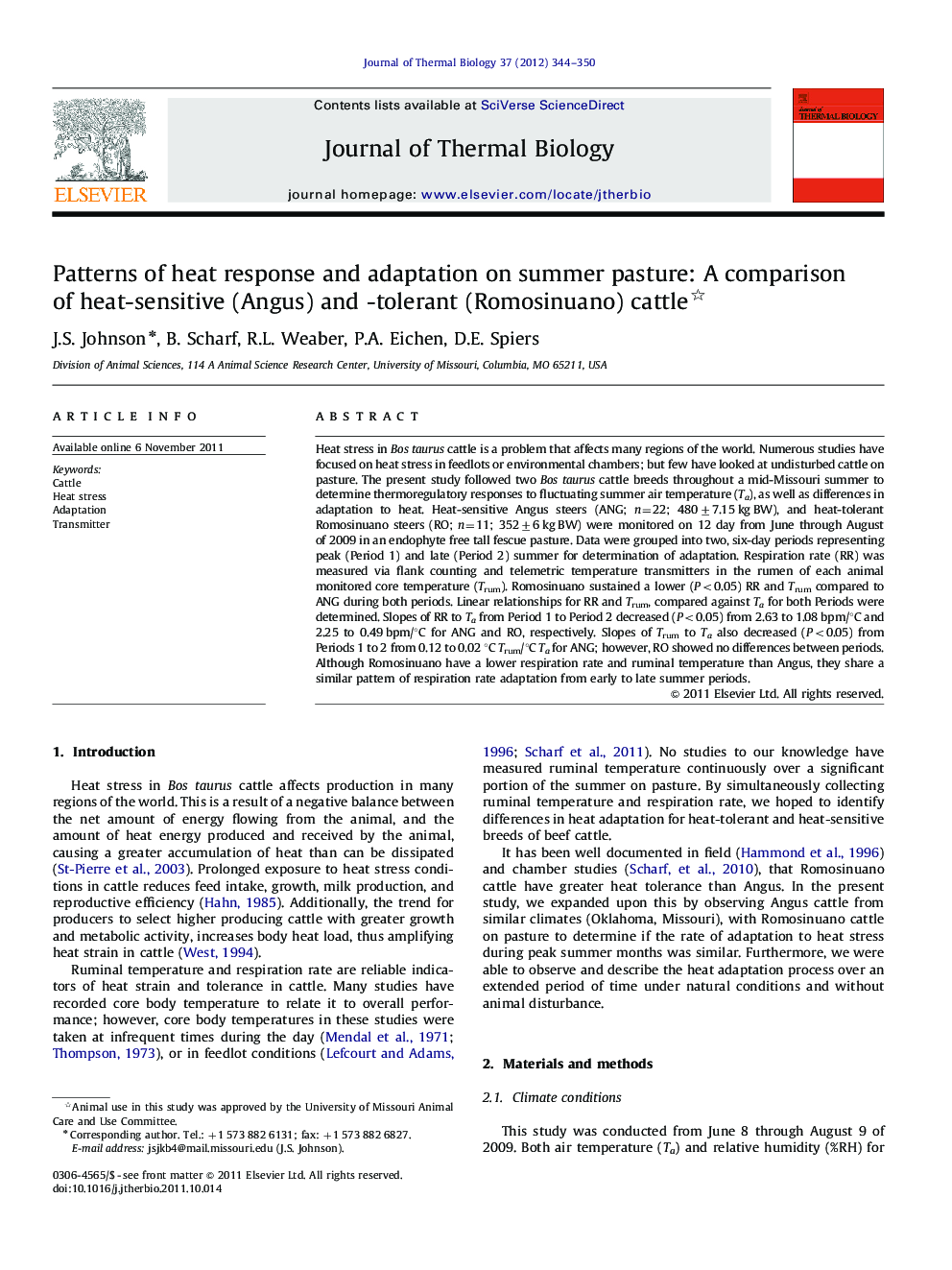| Article ID | Journal | Published Year | Pages | File Type |
|---|---|---|---|---|
| 2843300 | Journal of Thermal Biology | 2012 | 7 Pages |
Heat stress in Bos taurus cattle is a problem that affects many regions of the world. Numerous studies have focused on heat stress in feedlots or environmental chambers; but few have looked at undisturbed cattle on pasture. The present study followed two Bos taurus cattle breeds throughout a mid-Missouri summer to determine thermoregulatory responses to fluctuating summer air temperature (Ta), as well as differences in adaptation to heat. Heat-sensitive Angus steers (ANG; n=22; 480±7.15 kg BW), and heat-tolerant Romosinuano steers (RO; n=11; 352±6 kg BW) were monitored on 12 day from June through August of 2009 in an endophyte free tall fescue pasture. Data were grouped into two, six-day periods representing peak (Period 1) and late (Period 2) summer for determination of adaptation. Respiration rate (RR) was measured via flank counting and telemetric temperature transmitters in the rumen of each animal monitored core temperature (Trum). Romosinuano sustained a lower (P<0.05) RR and Trum compared to ANG during both periods. Linear relationships for RR and Trum, compared against Ta for both Periods were determined. Slopes of RR to Ta from Period 1 to Period 2 decreased (P<0.05) from 2.63 to 1.08 bpm/°C and 2.25 to 0.49 bpm/°C for ANG and RO, respectively. Slopes of Trum to Ta also decreased (P<0.05) from Periods 1 to 2 from 0.12 to 0.02 °C Trum/°C Ta for ANG; however, RO showed no differences between periods. Although Romosinuano have a lower respiration rate and ruminal temperature than Angus, they share a similar pattern of respiration rate adaptation from early to late summer periods.
